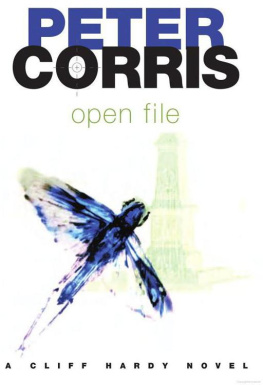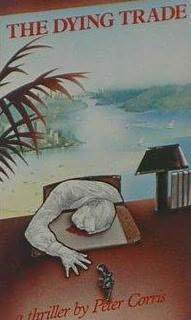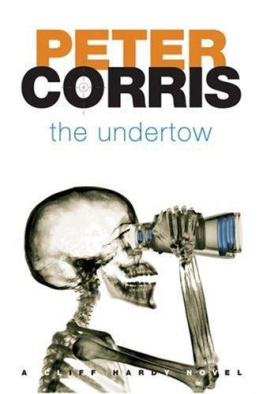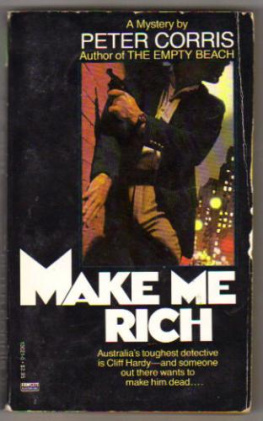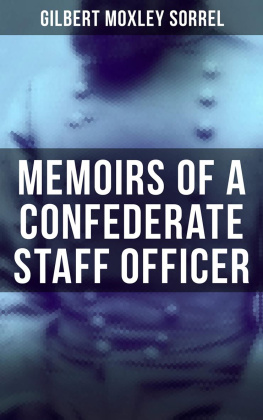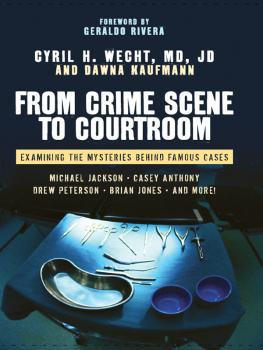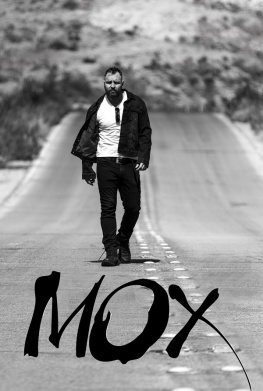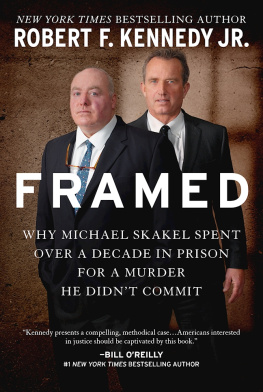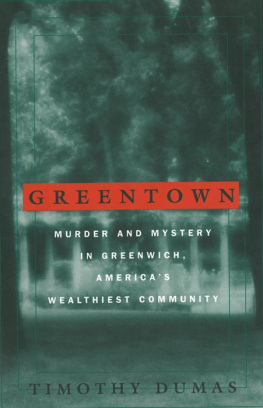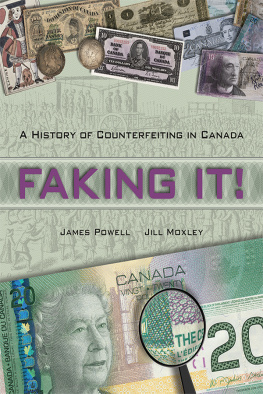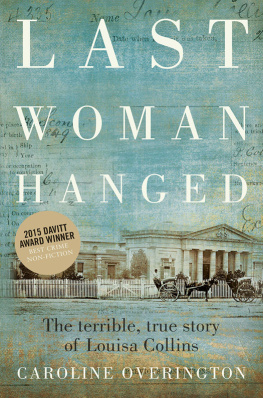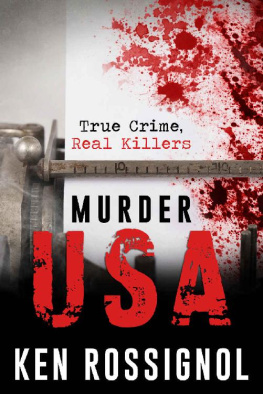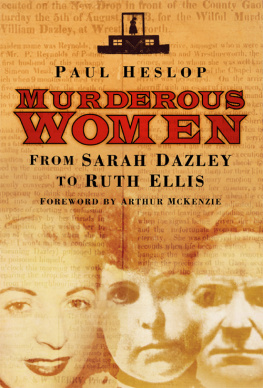ACKNOWLEDGMENTS
Thanks to Jean Bedford for support in the planning and writing of this book at every stage. Thanks also to Chris Corris, Miriam Corris, Ruth Corris, Barrie Hungerford, Doreen Johnston, Tom Kelly, Beverley Kingston, Dr Monica Lahra, Michelle Murray, Michelle Nichols, Elizabeth O'Brien, Jessica O'Donnell, Judge Greg Woods.
Special thanks to Christine Yeats and staff at the NSW State Records office and to Holly Schulte and Caleb Williams at the Justice & Police Museum, Sydney.
APPENDIX
THE REMAINS OF WILLIAM MOXLEY
Permission was given for Moxley to be buried outside the gaol but reports on his final resting place are conflicting. One newspaper stated that Moxley was buried at the Matraville cemetery, another at Botany; these are alternative names for the same place. The cemetery has complete records for the period and Moxley's name does not appear on its register.
The Daily Telegraph reported on 12 August that Moxley had written to Linda Fletcher asking her to tell the paper that, in planning to will his body to the university, he intended its examination to prove his claim to have been suffering from delusions. The paper quoted a spokesman for the Department of Anatomy: If the university authorities agree to accept the offer, the brain would be our interest.
But no will for Moxley was lodged with the Supreme Court. A memo from the superintendent of Long Bay Gaol states that Moxley handed over certain items, including a request concerning the disposal of his body, to Colonel William Pennell of the Salvation Army. It is possible that Moxley's wish was for his body to be given to the university, but Salvation Army archives shed no light on the matter and the university has no record of such a bequest.
The whereabouts of the remains of William Moxley are unknown.
AUTHOR'S NOTE
Parts of this book are reconstructions based on official records, newspaper accounts and other contemporary sources.
THE KILLING
I found some shattered bone,
22 grains of shot, cardboard used
in cartridges and a considerable
quantity of congealed blood.
DETECTIVE THOMAS HILL
Dorothy Denzel is a nursemaid. It is 1932 and there are nursemaids, charged with the care of young children, in upper middle-class houses. She is 21 years old, single but with a boyfriend. At a little after 8 pm her employer, Alice Victoria May Thomas of Clifton Avenue, Burwood, bids Dorothy goodnight as she leaves the house to join her boyfriend, waiting in his car out on the street. Dorothy is tall at 178 centimetres; she weighs 67 kilograms and is athletically built. She is good-looking with strong but harmonious features and dark hair. She has won a local beauty contest recently and a photograph shows her looking proud in her regalia. Tonight she wears a blue dress and a beret, which her employer later describes as quite like a beret of her own but of an inferior weave.

DOROTHY DENZEL IN HER REGALIA AS QUEEN OF THE HAWKESBURY

DOROTHY RUTH DENZEL

FRANK BARNBY WILKINSON
Dorothy is a well-known figure in her home town of Windsor. She has won awards for civic duties and has worked at various jobs in the Windsor area to everyone's satisfaction. Probably she has taken the job in Burwood to be closer to the attractions of the city and to her boyfriend, Frank Wilkinson.
Frank is 25 and works as a compositor at Fairfax, the newspaper publishers. He drives a red Alvis, a sporty two-seater with a dickie seat. Frank has prepared for the outing by bringing along a rug. He is a keen sportsman with a build more suited to tennis or golf than to football. He is, in fact, a little shorter than Dorothy at 175 centimetres and slighter at 64 kilograms.
They drive to a secluded spot near the Strathfield golf course, a popular lovers lane. Today this area features sculptured parkland with a playground, and the golf course is protected by a high cyclone fence; but in 1932 the area is rougher, grassy with trees. The adjoining streets, today packed tight with standard suburban houses, are unpaved, and the few houses are separated by many vacant blocks and paddocks.
Dorothy and Frank have been keeping company for some time. Their families expect an engagement soon. In an Australia being knocked sideways by the Great Depression, they are a favoured couple attractive, healthy and, above all, employed.
Arriving at their chosen spot, one they have visited often before, they spread the rug on the ground. It is early April and getting dark in these times before daylight saving, but the air is still mild after a balmy Sydney day. It is a straightlaced time and they are respectable people Dorothy's father is a garage proprietor and Frank's a storekeeper. They sit rather than lie. They kiss. They talk.

A hundred yards away, a man pulls up in a truck. He has probably done before what he is planning to do now. He comes from the shadows. He studies the car and the couple. He puts a hessian bag with eye-holes cut out over his head, forming a sinister mask. He carries a double-barrelled shotgun. He advances on the couple, threatens them with the gun and demands money. Dorothy is first to recover from the shock. She reaches into the pocket of Frank's jacket, takes out some coins and offers them. It is only a few shillings and the man is not pleased. He demands more. Frank jumps to his feet, ignores the gun and attacks, tearing the mask away.
The man is a little taller and heavier than Frank more Dorothy's size in fact but he is strong from years of hard physical work. He punches Frank then knocks him out with the butt of the shotgun. Dorothy is now terrified and paralysed. The man forces her to the ground, tears a strip from the rug and ties her hands. He does the same to the unconscious Frank. If Dorothy screams there is no one to hear her.
With the shotgun at the ready, the man forces Dorothy into the passenger seat of Frank's car. He then drags the inert Frank across the grass and manhandles him into the dickie seat where he slumps, almost out of sight.
In 1932 there is much less traffic on the roads than today, fewer traffic lights, fewer chances for the abduction to be observed. The man drives the Alvis to Moorebank, an area he knows well from his work as a timber cutter and as a former resident. He knows of an unoccupied cottage on Illawarra Road; he has applied unsuccessfully to rent it. The cottage is at a distance from other houses, dilapidated, with overgrown surroundings and a derelict fence. Frank has regained consciousness but is groggy. The man threatens the young couple with the shotgun, prods them, forces them out of the car and through the weeds and bushes to the empty house, where he deposits Dorothy in a room and Frank in an adjoining shed. He uses Dorothy's stockings to tie her feet. He ties Frank's feet with strips of the rug.
He leaves them and drives a short distance in the Alvis before running out of petrol. It is the early hours of the morning and it takes him two attempts to find more; he pays for it with the money he has just stolen. He drives back to Strathfield, disables the truck for safety and returns to Moorebank. He returns to the house, where he rapes Dorothy.
Next page


